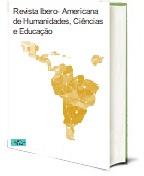EPIDEMIOLOGICAL ANALYSIS OF SEPTOPLASTIES FOR CORRECTION OF DEVIATED NASAL SEPTUM IN BRAZIL
DOI:
https://doi.org/10.51891/rease.v8i6.6038Keywords:
Nasal septum. Otorhinolaringology. Nasal obstruction.Abstract
Nasal obstruction is characterized as the sensation of impediment of the passage of air through the nostrils, which can have an important impact on the quality of life of its patients. The nasal septum deviation is a very common etiology, whose clinical evaluation in the scope of otorhinolaryngology does not demand complications, facilitating its recognition and diagnosis. The objective of this present study is to analyze the epidemiological profile of septoplasty surgeries to correct a deviated septum in the regions of Brazil, during a period of 5 years. An observational, descriptive and cross-sectional collection of data available in the DATASUS database from January 2014 to January 2019 was carried out, evaluating the number of hospitalizations, average length of stay and mortality rate of the septoplasty procedure to correct a deviated septum. nasal. In Brazil, during the analyzed period, there were 24,459 hospitalizations for the septoplasty procedure to correct nasal septum deviation. Regarding the mortality rate, we have only the South region with a percentage of 0.02%. The same occurs with the number of deaths, in which only the South of the country scores, with 1 reported death. The fact that septoplasty is a conservative surgery makes it a safe procedure for different age groups, as we can see from the high number of procedures performed in a 5-year interval. Therefore, we have to ensure that the surgery to correct a deviated septum continues to be less aggressive, in order to maintain the low morbidity rate.
Downloads
Downloads
Published
How to Cite
Issue
Section
Categories
License
Atribuição CC BY

